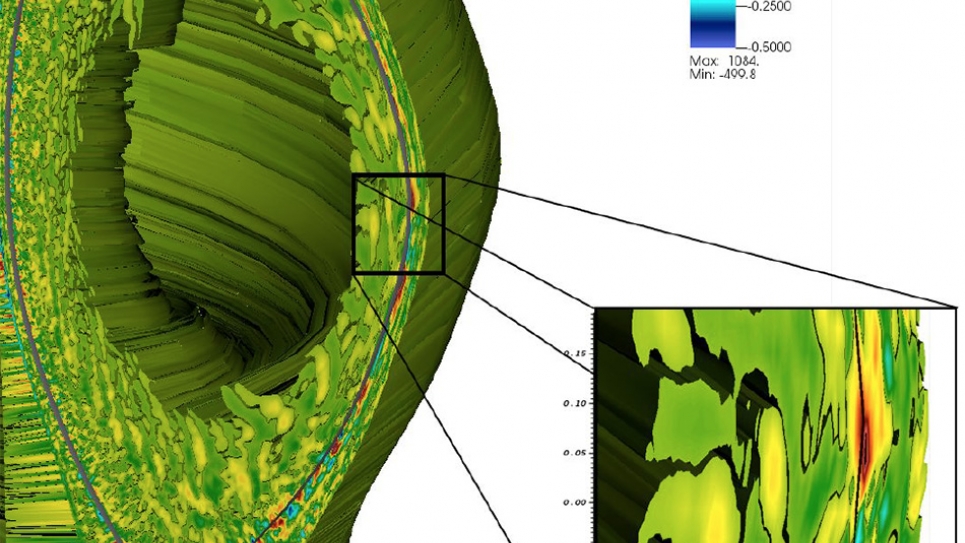
High-Fidelity Simulation of Fusion Reactor Boundary Plasmas
The project goal is to advance the critical scientific understanding of plasma physics at first-principles level in a magnetic fusion device. This research aims to enhance the predictability of ITER performance, with special focus on the edge region that is crucial for confinement of burning plasma and a tolerable spread of heat on the wall surface. By solving fundamental kinetic physics equations, such work can help accelerate attaining fusion energy production. Multiscale behaviors of fusion reactor edge plasma in complex geometry can only be addressed through exascale computing.
The project goal is to advance the critical scientific understanding of plasma physics at first-principles level in a magnetic fusion device. This research aims to enhance the predictability of ITER performance, with special focus on the edge region that is crucial for confinement of burning plasma and a tolerable spread of heat on the wall surface. The proposed research will be performed with the unique five-dimensional edge gyrokinetic particle-in-cell code XGC (Xpoint included Gyrokinetic Code). XGC is a flagship code of Princeton Plasma Physics Laboratory and serves the fusion research community with a worldwide user base.
XGC has been applied to difficult studies of low-beta (beta=plasma energy/magnetic field energy) electrostatic plasma turbulence in the cold edge plasma making, for the first time, ITER-critical kinetic discoveries on nonlinear blobby edge turbulence, divertor heatflux width, edge transport bifurcation dynamics, etc. XGC is a multiscale, multiphysics transport code enabling self-organization of large scale collisional and neutral particles physics with microscale turbulence physics in a realistic diverted geometry. XGC’s problem size reached the capability limit of the present leadership class supercomputers Mira and Titan (OLCF), limiting the ITER simulation to a shorter time simulation of pure plasma on coarser grid than desired. The material wall always introduces impurity particles into the plasma and changes the plasma confinement property significantly, Transport of the tungsten impurity particles, sputtered from the ITER divertor, across the edge plasma could have a devastating effect on the success of the ITER program, but requires extreme scale computing for understanding and predictability.
The increased computing capability of Aurora can increase XGC’s capability to the next level. The team’s focus for the early science is, thus, to make the ITER edge simulation more realistic by 1) adding the gyrokinetic impurity species to the existing gyrokinetic main ions and drift-kinetic electrons (the gyrokinetic impurity routine already exists in XGC), 2) allowing finer mesh to resolve shorter wavelength turbulence, and 3) prolonging the simulation to impurity transport time scale across the edge plasma layer. Aurora’s increased computing capability can also allow electromagnetic simulation, which requires solution of additional field quantities (magnetic field fluctuation, in addition to the electric field fluctuation).
By solving fundamental kinetic physics equations, this work can help accelerate attaining fusion energy production. Multiscale behaviors of fusion reactor edge plasma in complex geometry can only be addressed through exascale computing.